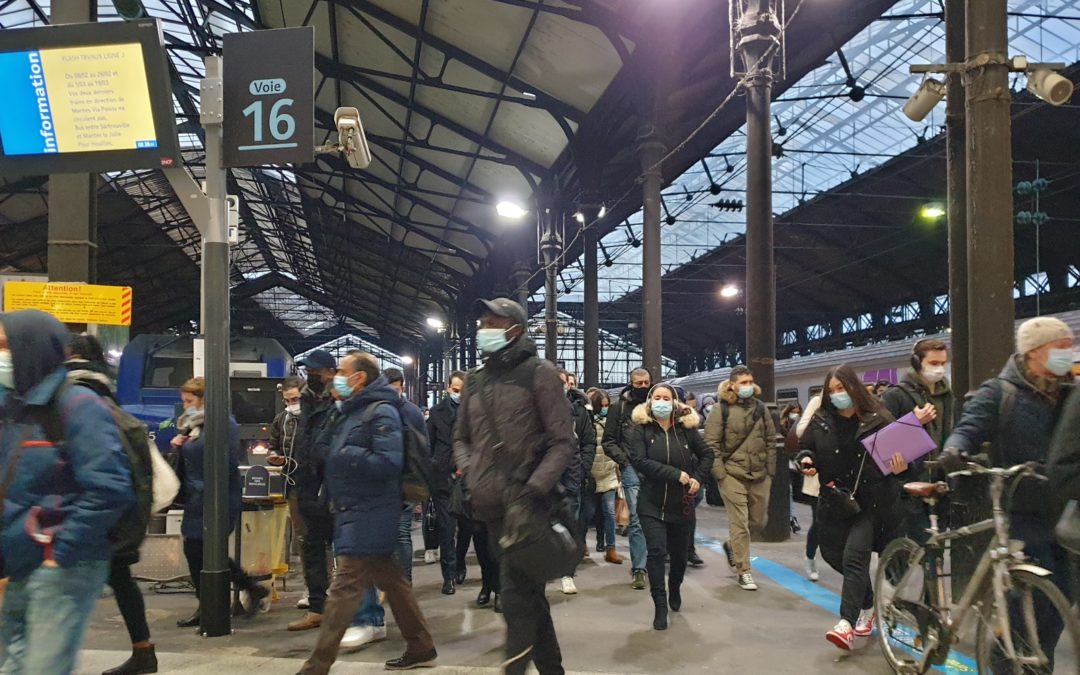The question of whether Paris is still alive isn’t just a philosophical issue, even in a country that cherishes les philosophes. For almost a year, the most central and touristic parts of the of the city have been largely devoid of people, driven away by lockdowns, curfews and travel bans. Articles in the American and French press describe a Paris that’s “gone for now,” whose “deserted streets and lowered store shutters” speak of desolation, a void. In this view, the pandemic has cost Paris its soul.
Certainly a 6 p.m. curfew, a winter of constant gray and rain and the closure of theaters, restaurants, cafés and monuments amid a deadly virus aren’t optimal for the spirit. I took a wet walk down the Champs-Elysées the other day and can vouch for the fact that almost no one is there.

There were a few shoppers inside the Louis Vuitton store, where on a normal day about 80-100 people would be standing in line behind the rope barrier outside, the masked security guard told me.
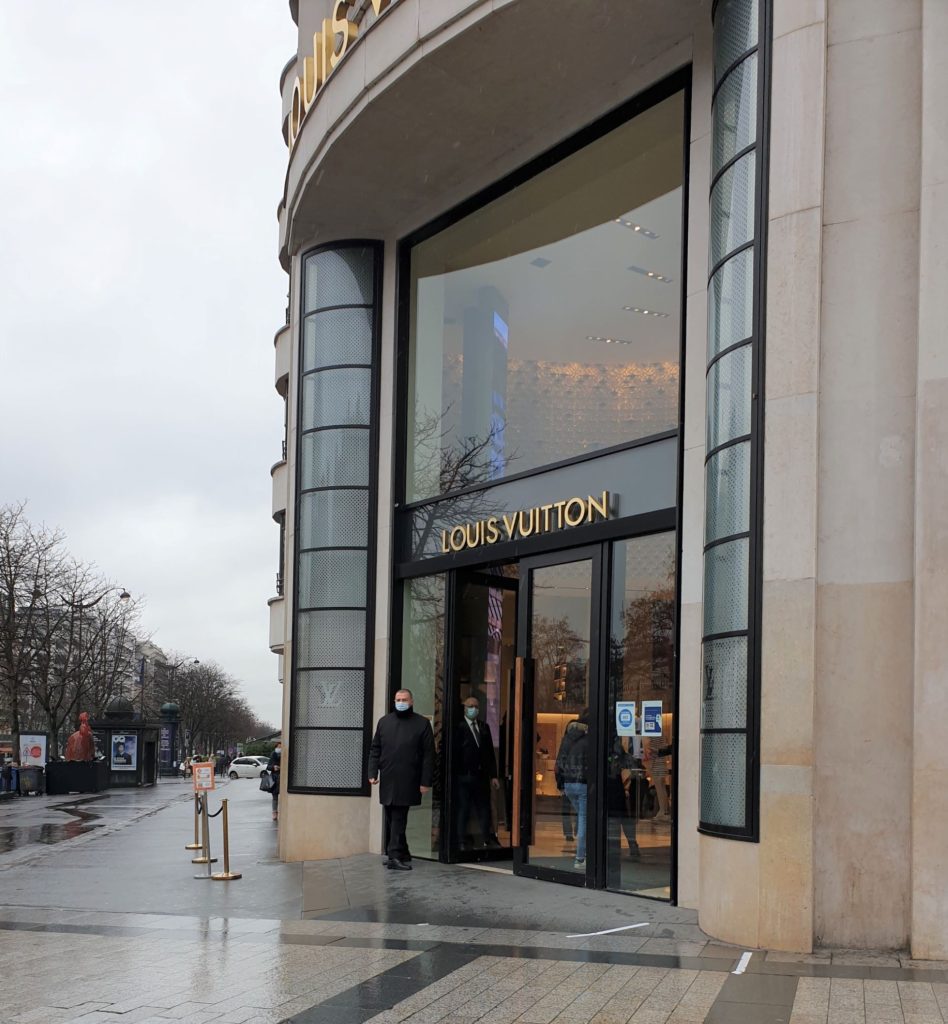
“But even so, we aren’t the ones who are hurt the worst,” he said as a bag-carrying woman exited past him. “It’s the small businesses, the restaurants.”
Indeed, the most popular tourist restaurant on the avenue, which like others is allowed to serve takeout food, was nearly customer-free.
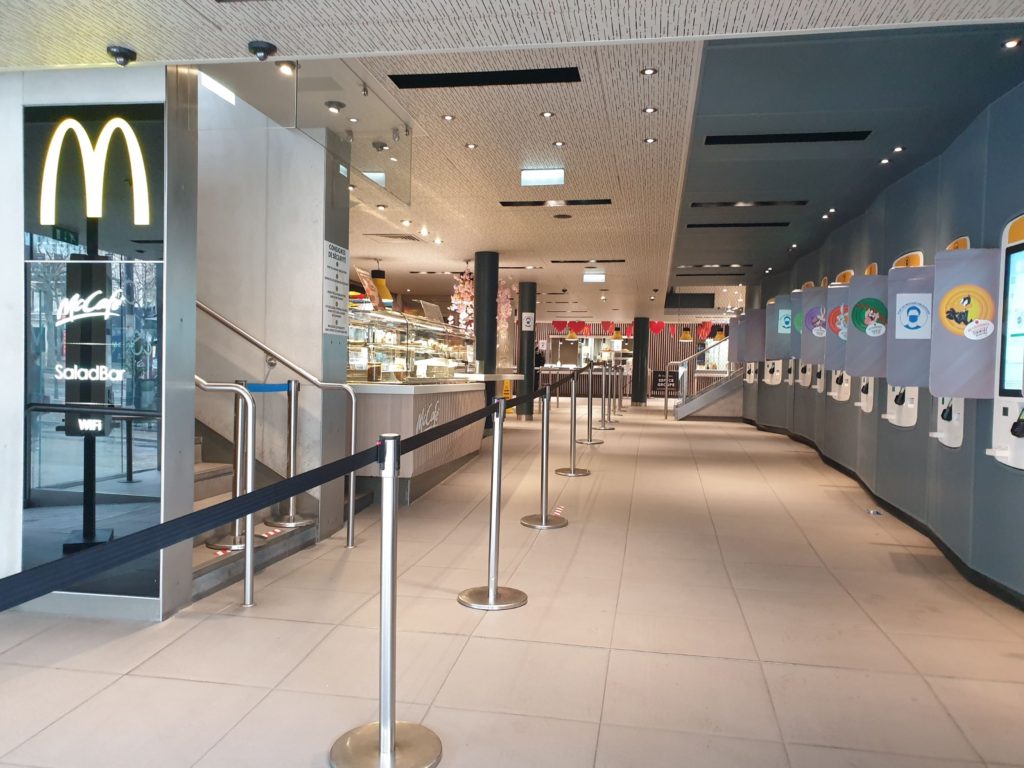
Still, I don’t buy the argument that Paris is “empty.” Sure, there’s hardly anyone in the neighborhoods the characters in “Emily in Paris” would go to. Or those in the French TV hit “Call My Agent,” for that matter. Or most tourists.
But there is plenty of Paris outside those clichés. The city’s streets, shops, schools and transit stations are filled with people going about their lives and work. at least before curfew time. They may not be on TV or in newspaper photos, but they aren’t soulless, purposeless or devastated. (Angry, frustrated and tired of the virus, yes. At the current pace of vaccinations, one of the worst in Europe, this won’t end until 2024.)
At the Saint-Ouen street market, shoppers snap up everything from shoes to salad.
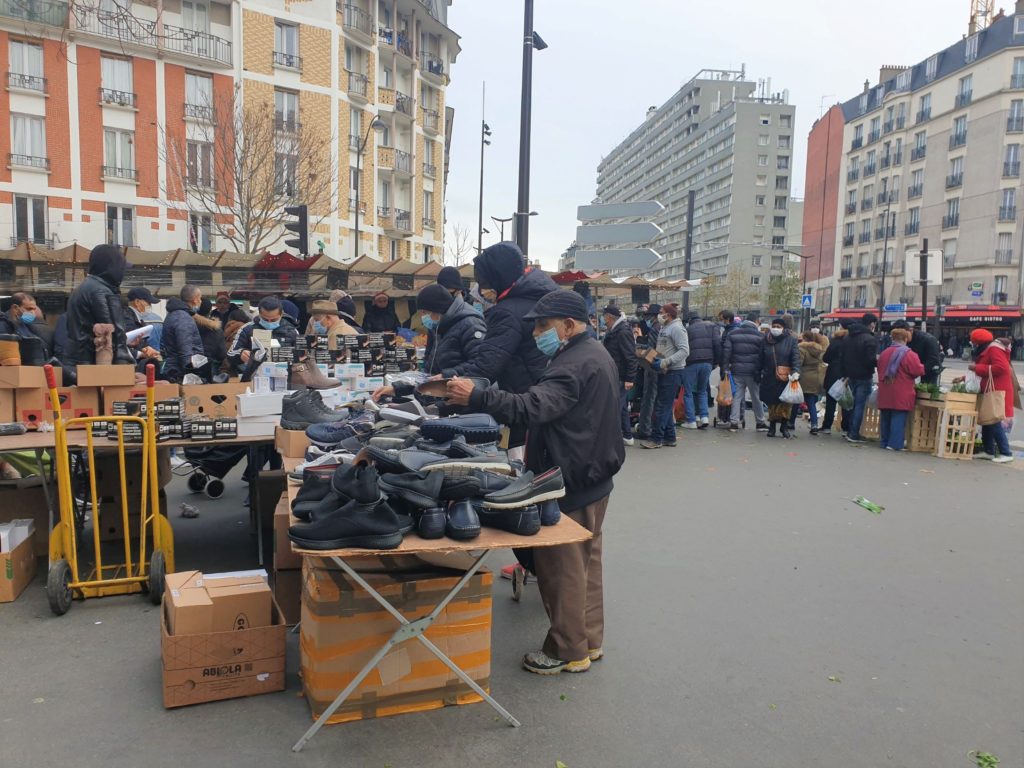
Many weekends feature Paris’s most faithful street occupants: demonstrators. This Feb. 4 manifestation was sponsored by the CGT, a communist union. The participants are demonstrating for “jobs, salary and the public sector.”
🇫🇷 FLASH – Une manifestation est en cours ce jeudi à #Paris à l’appel de la #CGT, d’une grève pour « l’emploi, le salaire et le service public ». (Actu Paris) #greve4fevrierpic.twitter.com/wT5yzlBHb0
— Mediavenir (@Mediavenir) February 4, 2021
In the living Paris, parents take their children to school every day. France closed schools during the strict two-month lockdown in the spring but they have been mostly open since then. Parents hope it stays that way even as the government struggles to avoid a third confinement. The number of new daily cases is holding flat, as are people hospitalized and in ICUs.
Parisians also gather to sip coffee and gab at the entrances of the local cafés or takeout stands. This guy was in the street-sale business long before COVID-19 arrived and there’s always a friendly crowd at his cart.
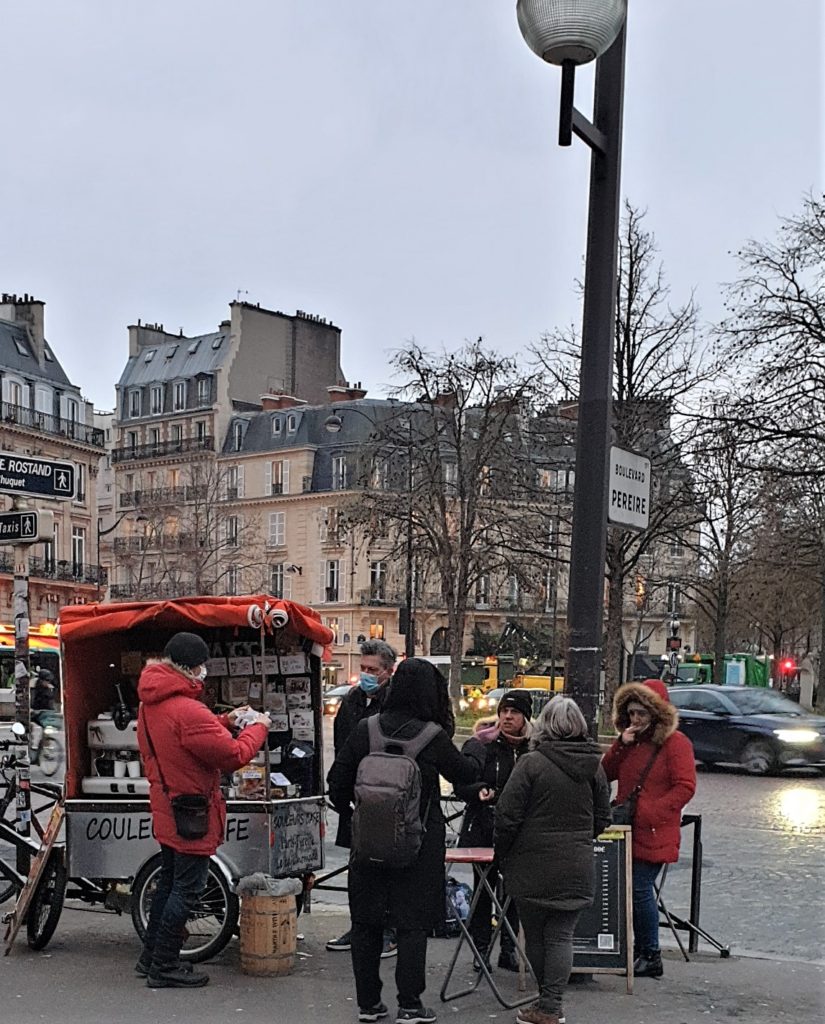
And people go to work. Companies are strongly encouraged to let their employees teletravailler — work from home. But that’s not possible if you are, say, a florist, or in other retail businesses. A visit to the Gare Saint-Lazare, a major Paris rail station, in morning rush hour showed that plenty of commuters are still coming in to jobs in the city.
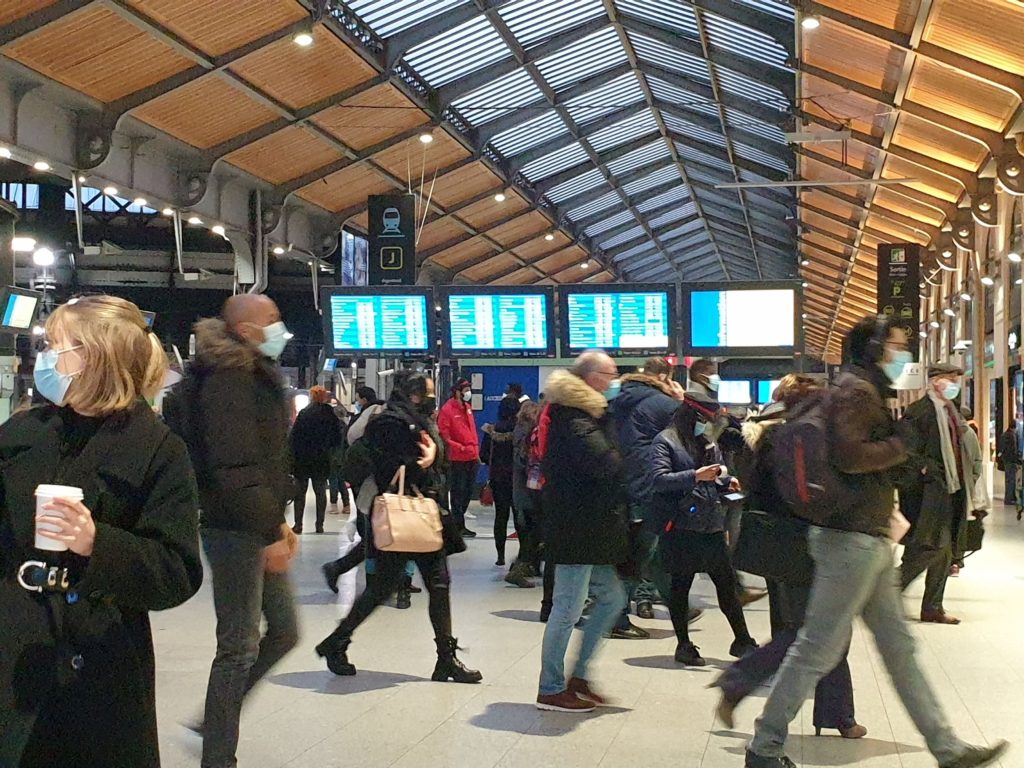
There’s another place in Paris that’s full of people, but it’s harder to photograph: The inside of people’s apartments. In theory, the curfew amounts to a ban on large parties at home. But there’s no real way to enforce that. The guests can stay all night, for instance, as the many loud young friends of my downstairs neighbor seem to have done for the last three Saturdays.
You can also write yourself an exemption from the curfew and then get together with all your best buds to, say, watch France play Italy in rugby on Feb. 6 (France won). One of my friends reported many footsteps on the stairs of his building that night, and roars from nearby apartments.
Other evidence of clandestine partying: My local fishmonger said some of his customers were ordering seafood platters for 20 before New Year’s Eve. In the Paris suburb of Aubervilliers, a group of maskless cops – who are supposed to enforce the curfew AND the mask rules – were caught on video dancing and singing at their station at 3 a.m.
These incidents reveal breaches of the government’s COVID rules, but they also show a city whose people live, and love, and laugh, and cry. A city that knows its rich history and traditions are far stronger than a virus. Paris isn’t gone. In some ways, it’s more present than ever.
